HSBC 2010 Annual Report Download - page 35
Download and view the complete annual report
Please find page 35 of the 2010 HSBC annual report below. You can navigate through the pages in the report by either clicking on the pages listed below, or by using the keyword search tool below to find specific information within the annual report.-
 1
1 -
 2
2 -
 3
3 -
 4
4 -
 5
5 -
 6
6 -
 7
7 -
 8
8 -
 9
9 -
 10
10 -
 11
11 -
 12
12 -
 13
13 -
 14
14 -
 15
15 -
 16
16 -
 17
17 -
 18
18 -
 19
19 -
 20
20 -
 21
21 -
 22
22 -
 23
23 -
 24
24 -
 25
25 -
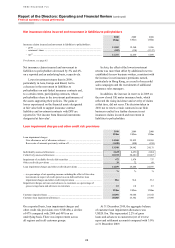 26
26 -
 27
27 -
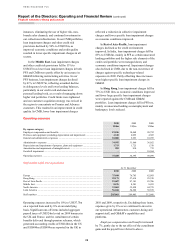 28
28 -
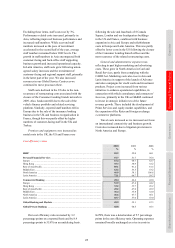 29
29 -
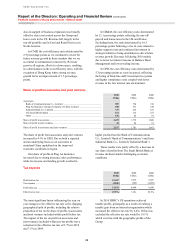 30
30 -
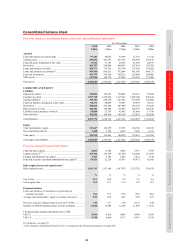 31
31 -
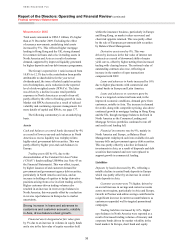 32
32 -
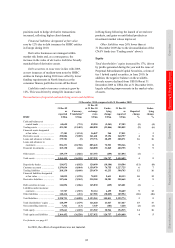 33
33 -
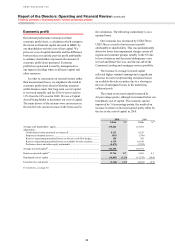 34
34 -
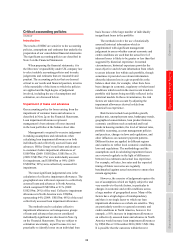 35
35 -
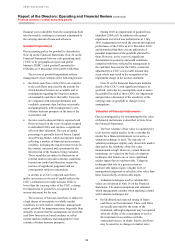 36
36 -
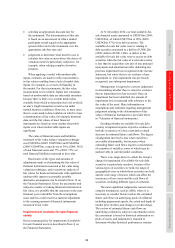 37
37 -
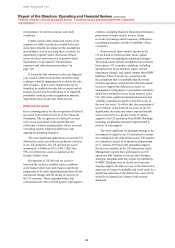 38
38 -
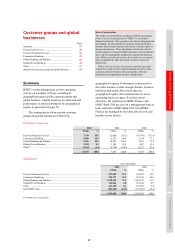 39
39 -
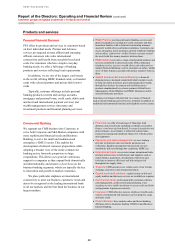 40
40 -
 41
41 -
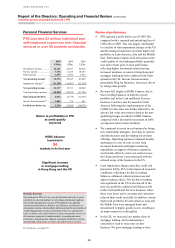 42
42 -
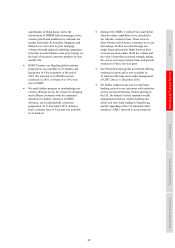 43
43 -
 44
44 -
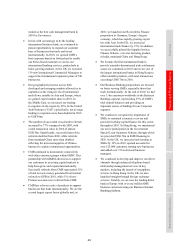 45
45 -
 46
46 -
 47
47 -
 48
48 -
 49
49 -
 50
50 -
 51
51 -
 52
52 -
 53
53 -
 54
54 -
 55
55 -
 56
56 -
 57
57 -
 58
58 -
 59
59 -
 60
60 -
 61
61 -
 62
62 -
 63
63 -
 64
64 -
 65
65 -
 66
66 -
 67
67 -
 68
68 -
 69
69 -
 70
70 -
 71
71 -
 72
72 -
 73
73 -
 74
74 -
 75
75 -
 76
76 -
 77
77 -
 78
78 -
 79
79 -
 80
80 -
 81
81 -
 82
82 -
 83
83 -
 84
84 -
 85
85 -
 86
86 -
 87
87 -
 88
88 -
 89
89 -
 90
90 -
 91
91 -
 92
92 -
 93
93 -
 94
94 -
 95
95 -
 96
96 -
 97
97 -
 98
98 -
 99
99 -
 100
100 -
 101
101 -
 102
102 -
 103
103 -
 104
104 -
 105
105 -
 106
106 -
 107
107 -
 108
108 -
 109
109 -
 110
110 -
 111
111 -
 112
112 -
 113
113 -
 114
114 -
 115
115 -
 116
116 -
 117
117 -
 118
118 -
 119
119 -
 120
120 -
 121
121 -
 122
122 -
 123
123 -
 124
124 -
 125
125 -
 126
126 -
 127
127 -
 128
128 -
 129
129 -
 130
130 -
 131
131 -
 132
132 -
 133
133 -
 134
134 -
 135
135 -
 136
136 -
 137
137 -
 138
138 -
 139
139 -
 140
140 -
 141
141 -
 142
142 -
 143
143 -
 144
144 -
 145
145 -
 146
146 -
 147
147 -
 148
148 -
 149
149 -
 150
150 -
 151
151 -
 152
152 -
 153
153 -
 154
154 -
 155
155 -
 156
156 -
 157
157 -
 158
158 -
 159
159 -
 160
160 -
 161
161 -
 162
162 -
 163
163 -
 164
164 -
 165
165 -
 166
166 -
 167
167 -
 168
168 -
 169
169 -
 170
170 -
 171
171 -
 172
172 -
 173
173 -
 174
174 -
 175
175 -
 176
176 -
 177
177 -
 178
178 -
 179
179 -
 180
180 -
 181
181 -
 182
182 -
 183
183 -
 184
184 -
 185
185 -
 186
186 -
 187
187 -
 188
188 -
 189
189 -
 190
190 -
 191
191 -
 192
192 -
 193
193 -
 194
194 -
 195
195 -
 196
196 -
 197
197 -
 198
198 -
 199
199 -
 200
200 -
 201
201 -
 202
202 -
 203
203 -
 204
204 -
 205
205 -
 206
206 -
 207
207 -
 208
208 -
 209
209 -
 210
210 -
 211
211 -
 212
212 -
 213
213 -
 214
214 -
 215
215 -
 216
216 -
 217
217 -
 218
218 -
 219
219 -
 220
220 -
 221
221 -
 222
222 -
 223
223 -
 224
224 -
 225
225 -
 226
226 -
 227
227 -
 228
228 -
 229
229 -
 230
230 -
 231
231 -
 232
232 -
 233
233 -
 234
234 -
 235
235 -
 236
236 -
 237
237 -
 238
238 -
 239
239 -
 240
240 -
 241
241 -
 242
242 -
 243
243 -
 244
244 -
 245
245 -
 246
246 -
 247
247 -
 248
248 -
 249
249 -
 250
250 -
 251
251 -
 252
252 -
 253
253 -
 254
254 -
 255
255 -
 256
256 -
 257
257 -
 258
258 -
 259
259 -
 260
260 -
 261
261 -
 262
262 -
 263
263 -
 264
264 -
 265
265 -
 266
266 -
 267
267 -
 268
268 -
 269
269 -
 270
270 -
 271
271 -
 272
272 -
 273
273 -
 274
274 -
 275
275 -
 276
276 -
 277
277 -
 278
278 -
 279
279 -
 280
280 -
 281
281 -
 282
282 -
 283
283 -
 284
284 -
 285
285 -
 286
286 -
 287
287 -
 288
288 -
 289
289 -
 290
290 -
 291
291 -
 292
292 -
 293
293 -
 294
294 -
 295
295 -
 296
296 -
 297
297 -
 298
298 -
 299
299 -
 300
300 -
 301
301 -
 302
302 -
 303
303 -
 304
304 -
 305
305 -
 306
306 -
 307
307 -
 308
308 -
 309
309 -
 310
310 -
 311
311 -
 312
312 -
 313
313 -
 314
314 -
 315
315 -
 316
316 -
 317
317 -
 318
318 -
 319
319 -
 320
320 -
 321
321 -
 322
322 -
 323
323 -
 324
324 -
 325
325 -
 326
326 -
 327
327 -
 328
328 -
 329
329 -
 330
330 -
 331
331 -
 332
332 -
 333
333 -
 334
334 -
 335
335 -
 336
336 -
 337
337 -
 338
338 -
 339
339 -
 340
340 -
 341
341 -
 342
342 -
 343
343 -
 344
344 -
 345
345 -
 346
346 -
 347
347 -
 348
348 -
 349
349 -
 350
350 -
 351
351 -
 352
352 -
 353
353 -
 354
354 -
 355
355 -
 356
356 -
 357
357 -
 358
358 -
 359
359 -
 360
360 -
 361
361 -
 362
362 -
 363
363 -
 364
364 -
 365
365 -
 366
366 -
 367
367 -
 368
368 -
 369
369 -
 370
370 -
 371
371 -
 372
372 -
 373
373 -
 374
374 -
 375
375 -
 376
376 -
 377
377 -
 378
378 -
 379
379 -
 380
380 -
 381
381 -
 382
382 -
 383
383 -
 384
384 -
 385
385 -
 386
386 -
 387
387 -
 388
388 -
 389
389 -
 390
390 -
 391
391 -
 392
392 -
 393
393 -
 394
394 -
 395
395 -
 396
396
 |
 |

33
Overview Operating & Financial Review Governance Financial Statements Shareholder Information
Critical accounting policies
(Audited)
Introduction
The results of HSBC are sensitive to the accounting
policies, assumptions and estimates that underlie the
preparation of our consolidated financial statements.
The significant accounting policies are described in
Note 2 on the Financial Statements.
When preparing the financial statements, it is
the Directors’ responsibility under UK company law
to select suitable accounting policies and to make
judgements and estimates that are reasonable and
prudent. The accounting policies that are deemed
critical to our results and financial position, in terms
of the materiality of the items to which the policies
are applied and the high degree of judgement
involved, including the use of assumptions and
estimation, are discussed below.
Impairment of loans and advances
Our accounting policy for losses arising from the
impairment of customer loans and advances is
described in Note 2g on the Financial Statements.
Loan impairment allowances represent
management’s best estimate of losses incurred
in the loan portfolios at the balance sheet date.
Management is required to exercise judgement
in making assumptions and estimations when
calculating loan impairment allowances on both
individually and collectively assessed loans and
advances. Of the Group’s total loans and advances
to customers before impairment allowances of
US$978bn (2009: US$922bn), US$15bn or 2%
(2009: US$15bn; 2%) were individually assessed
for impairment, and US$963bn or 98% (2009:
US$907bn; 98%) were collectively assessed for
impairment.
The most significant judgemental area is the
calculation of collective impairment allowances. The
geographical area with most exposure to collectively
assessed loans and advances is North America,
which comprised US$198bn or 21% (2009:
US$219bn; 24%) of the total. Collective impairment
allowances in North America were US$9bn,
representing 64% (2009: US$13bn; 68%) of the total
collectively assessed loan impairment allowance.
The methods used to calculate collective
impairment allowances on homogeneous groups
of loans and advances that are not considered
individually significant are disclosed in Note 2g
on the Financial Statements. They are subject to
estimation uncertainty, in part because it is not
practicable to identify losses on an individual loan
basis because of the large number of individually
insignificant loans in the portfolio.
The methods involve the use of statistically
assessed historical information which is
supplemented with significant management
judgement to assess whether current economic and
credit conditions are such that the actual level of
inherent losses is likely to be greater or less than that
suggested by historical experience. In normal
circumstances, historical experience provides the
most objective and relevant information from which
to assess inherent loss within each portfolio, though
sometimes it provides less relevant information
about the inherent loss in a given portfolio at the
balance sheet date, for example, when there have
been changes in economic, regulatory or behavioural
conditions which result in the most recent trends in
portfolio risk factors being not fully reflected in the
statistical models. In these circumstances, the risk
factors are taken into account by adjusting the
impairment allowances derived solely from
historical loss experience.
Risk factors include loan portfolio growth,
product mix, unemployment rates, bankruptcy trends,
geographical concentrations, loan product features,
economic conditions such as national and local
trends in housing markets, the level of interest rates,
portfolio seasoning, account management policies
and practices, changes in laws and regulations, and
other influences on customer payment patterns.
Different factors are applied in different regions
and countries to reflect local economic conditions,
laws and regulations. The methodology and the
assumptions used in calculating impairment losses
are reviewed regularly in the light of differences
between loss estimates and actual loss experience.
For example, roll rates, loss rates and the expected
timing of future recoveries are regularly
benchmarked against actual outcomes to ensure they
remain appropriate.
However, the exercise of judgement requires the
use of assumptions which are highly subjective and
very sensitive to the risk factors, in particular to
changes in economic and credit conditions across
a large number of geographical areas. Many of the
factors have a high degree of interdependency
and there is no single factor to which our loan
impairment allowances as a whole are sensitive. They
are particularly sensitive to general economic and
credit conditions in North America, however. For
example, a 10% increase in impairment allowances
on collectively assessed loans and advances in North
America would increase loan impairment allowances
by US$0.9bn at 31 December 2010 (2009: US$1.3bn).
It is possible that the outcomes within the next
